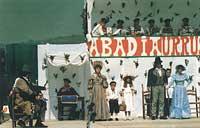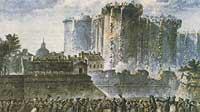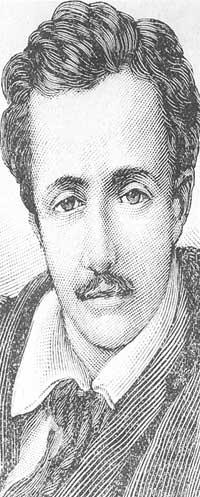Antoine Abbadia: 1810-1897
1993/08/01 Sagarzazu, Iñigo Iturria: Elhuyar aldizkaria
His precious column in the brilliant pages of the Encyclopaedia Britannica and the one he has in the gigantic encyclopaedia of Espasa Calpe will soon disappear won by notaries of more recent times.
Abbadia, therefore, was a character of his time, of those who have enjoyed fame and honor during his life, but only during that time.
The reason why people who like him have worked in the field of science are forgotten is the trend of current science towards closed areas and microspecialties. Thus, some characters in the history of human knowledge have run out of place. They are wise. Antoine Abbadia did not devote his entire life to an experiment, nor to two or three of the same field of research. On the contrary, there were many fields in which he worked and worked with capacity. Moreover, he cultivated some knowledge until he exhausted his strength and only to satisfy the desire to know them, without seeking other benefits.

Antoine Abbadia was born in Dublin in 1810, his parents being a Basque Ürrüxtoiko fleeing the French revolution and an Irish woman named Elisabeth Thompson of Parck.
That large, happy and rich family enjoyed their father from the bitter exile. Incidentally, let's say that these enormous fortunes were acquired by his father by sending weapons from Bilbao for the Irish uprising. But in 1820, when the monarchy was restored, it returned to France, first to live in Toulouse and then to Paris.
Antoine, who was born in Paris, has his first projects.
It was a time of romanticism and therefore all the works of those years began with indignation.
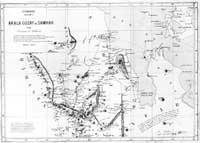
Therefore, there were no issues without interest to Antoine. Everything was attractive to him and made no distinction between art, science, esotericism or religion. His prolific and terrible gift of learning with him throughout his life did not plunge him into ruptures or contradictions. Those years of uncertainty, conflict and anger were very productive for Antoine Abbadia. He admired Chateaubriand and had the idea and intention to travel from his novels. Sorbonne classes were crazy. There he had teachers who in the nineteenth century of France were high-level characters: Guizot, Cousin and Villemain in law and Biot and François in the sciences Arago.
The latter, director of the astronomical observatory of Paris, led the last years of Antoine's university studies. They were solid studies, but many times due to Antoine's hunger for knowledge, he opened up to all disciplines so that Antoine, Mademoiselle Lenormand, would teach to make predictions of the future he visited the famous fortune teller of the Empress Josefina. Everything was about to do what corresponded to his future, but he would soon begin to unleash bold situations and important research.
When in 1836 Abbadia prepares a great exploration trip through Africa, Aragon, as an experience, sends it to Pernambuco (Brazil) to study terrestrial magnetism. Andromeda is the frigate that the French state will send for this purpose. There, and by order of the same king and in order to move away from France, is Prince Louis Napoleon. Both are of the same age and reconcile to dare predict the future of Prince Abbadia. A future day will govern France and, ironically, will advance to request an appointment for the palace of Tuilleries.
In the port of Olinda they said goodbye and Abbadia landed. In Brazil, in two months, he made 2,000 geomagnetic observations and, when returning to Europe, the results reached the satisfaction of Professor Arago.
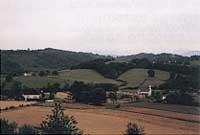
His exploratory project advanced, but before beginning, with his friend Agustín Xaho, of Suletino and Carlist origin, he published a work on Basque grammar.
He then went to Africa. Alexandrian Arnaud is a young brother who hopes to be his traveling companion. Among the objectives of the Abbadia exploration is the discovery of the head of the Nile River.
1837-39. The Abbadids formed a caravan in Alkairo and Nile headed for Tebaida to cross the Arab desert and re-embark at Al-Kusair. They sailed the Red Sea to Mitsiwa and from there they tried to enter the lands of Ethiopia. The mountain flags and the prince of Tiger will prevent them from making progress. Some and others will come to Gonder, capital of the divided Abyssinian Empire, circumventing (much later than expected). Abbadia has already realized that these lands have a volcanic origin that will hinder geodesic works.
Abbadia needs better work tools and returns to Europe in search of them while her brother is waiting. In Paris he received a great reception in scientific environments. He was given the medal of the Geographical Society and in the Vatican, the Pope appointed him a knight of the Order of St. Gregory.
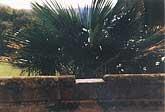
1840-42. Overcoming more obstacles, Abbadia returns to Gonder and soon begins his work. But he was blinded by a sinister accident with a sheath of his rifle. Danger and tragedy are closer than ever, but before marrying desperately, he starts looking for a doctor. Accompanied by the makila in his hand, he travels to Arabia to the English colony of the Gulf of Aden, from there to Alkairo and again to Aden, after suffering enormous hardships along the way. But their misfortune does not end there.
Captain Heines, governor of the province, considers a spy sent from France and orders his arrest. Distressing, Abbadia will escape from the sea to Somalia and hide among the inhabitants of Bera. From there he will send a message to his brother, who has become a counselor to the king of Gojam, so that he may know the accident of Antoine. The Ophthalmos will gradually improve and the Abbadia will meet again. But once again the British Empire will act against them, this time at the hand of Minister Lord Palmerston.
This will put a price on the Abbadid bosses for killing Arnaud £500. Drifting down the road to the harer, they head towards the bait lands taking the shortest path. The king of Gojam promises to help them and on the way they kill a local prince allied with the English and enter Gonder. Antoine Abbadia's exploration work stopped hindering.
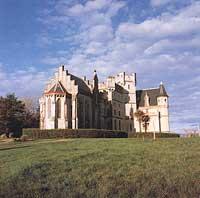
1843-49. The final goal of the expedition remained to find the legendary fountain of Nile, the favorite dream of geographers and emperors from Julius Caesar to James Bruce. According to his calculations, in the select limits of the lands of the gallas, it was needed about 900 km from the abyssinic coast. Abbadia wanted to carry out a complete demarcation of his exploration, for which he intended to elaborate a geodetic map that collected all the accidents of the road that departed from the desert coast of Asma with 1,500 men and hundreds of camels. It was a disproportionate purpose, since it was not enough to leave behind the villages and the mountains: it had to go up to each of the most representative accidents of the earth's surface and make in it a small paralysis.
For these works Abbadia devised a faster and more precise method, dubbed Specific Geodesia, as well as a theodolite adapted to this system, which he called Abba. In any case, the slow pace of the expedition slowed even further by the appearance of other jobs along the way. Herriz Herri, Abbadia will collect data on grammar, ethnicity and religions and, seeing that the slave path was adjusted to the trajectory it had (although in the opposite sense), will collect many valuable data on the unknown Eastern slave trade.
His reports on this matter were taken into account when he came to Arago's ministry and abolished slavery. Finally, on January 19, 1847, Antoine believed that he was a mature person in the cradle of the White Nile and transferred the news to his friend Arago. In a few weeks, the discovery was published at the Atheneum in London, and thus has passed into history as the last explorer who discovered the origin of Abbadia Nile and who mixed the river. But the reading would last several years.
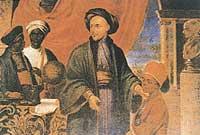
1850-58. Returning to Europe after twelve years of exploration in Africa, a complex stage of adaptation to Western life begins for Abbadia. The medals of honor and recognition of the European academies will surprise. He also received the Legion of Honor by decree of emperor. His old friend Louis Napoleon welcomed him in the palace, thus fulfilling the announcement of years ago. The abbadia was in the foam of fame, both of them extolled by the emperor and his enemy François Aragón. But, as soon as possible, he retired to the castle that left Paris and bought in Audaux (Biarnon) as a young man.
There he lived surrounded by lions and antelopes brought from Africa, with their Abyssinian servants and a beautiful galla of shields, Abdulah, born in the slave. Abbadia started working hard. He classified the pile of notes brought from the journey, publishing some unknown apocryphal texts in Europe and studies on the true cause of Nile and the Ethiopian storm. At the same time, it will begin with works of very different kinds. As a representative of the Academy of Sciences, he will travel to observe the eclipses and alternate the stays of Biarno with visits to the laboratory he has installed to analyze the variations of the vertical in a wonderful mountain of Urruña, today of Hendaia. At this time he will create the Euskal Jaiak, always with his money.
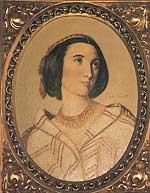
1859-73. On 21 February 1959 he married Abbadia Virginie de Saint-Bonnet, a peculiar Lyonese. They had no children. But by then the Basques had already given him the name “father Abbadia”, “father of the Basques”. The connections with its Basque roots are narrowing and sells the castle of Audaux and with the neo-gothic plans of Viollet le Duc builds a new castle in the location of the laboratory of Hendaia. The construction of the castle will require a great dedication. In it will appear the inscriptions of about 20 languages known to Abbadia. However, while still working the materials of the expedition, it will continue to publish works on geodesy, balloon physics and vertical variation.
For his part, Louis-Lucien will interact with Bonaparte to work Basque grammar and gather the first Basque library. This collection of books is currently missing. In 1867 he was offered a chair at the Academy of Sciences and the Institute of France and will travel once a week. A few years later, on the occasion of the Second Carlist War, the Franco-Prussian War and the Commune, Abbadia will retire to the castle and dive into the laboratory. However, on the eve of the war and being mayor of Hendaia, and due to the friendship with Tirso Olazabal, he mediated on the smuggling of weapons for the Carlists. Abbadia will see from the library of his castle that on the other side of the Bidasoa there are weapons that have passed through his house igniting the war. Gerreka's disgust will be born, which has caused many of his friends to lose their lives, such as Abdulah or Louis Napoleon.
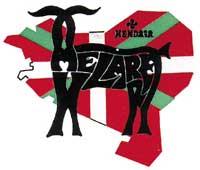
1874-97. This intense atmosphere does not offer the necessary tranquility to learn and Abbadia is going to devote itself to living more and more. He goes to Haiti to see the solar eclipse and, back, he will publish his main works on abysmal exploration. The adaptation of these works lasted as long as travel. When the vocabulary and geographical maps of Amharera ended, Abbadia turned seventy. He was a wise man with many white hairs, a rather strange grandfather, able to win on the pediment Pierre Lotiri and come from Socoa swim to his house. Suddenly, sadly, called from Africa, the remaining forces will return to travel.
On this occasion, as a mere tourist of the end of the century, Abbadia reviews and shows his wife the landscapes that thrilled in his youth: Go to Aden, cross Egypt and visit Constantinople. He returns home and from his observatory continues to analyze the stars. He will be appointed president of the Academy of Sciences, but only stars interest him. The greatest celestial map ever made is his project in mind when death came on March 19, 1897. He died in his apartment in Paris, the same apartment that Chateaubriand lived in. Therefore, we can say that Chateaubriand is linked to the beginning and end of his travels. He was buried in Hendaia, in the castle. The funerals lasted 18 days and eleven verses were sung that promised they would never forget.
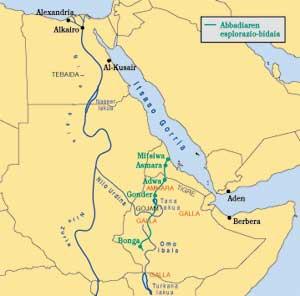

Gai honi buruzko eduki gehiago
Elhuyarrek garatutako teknologia



